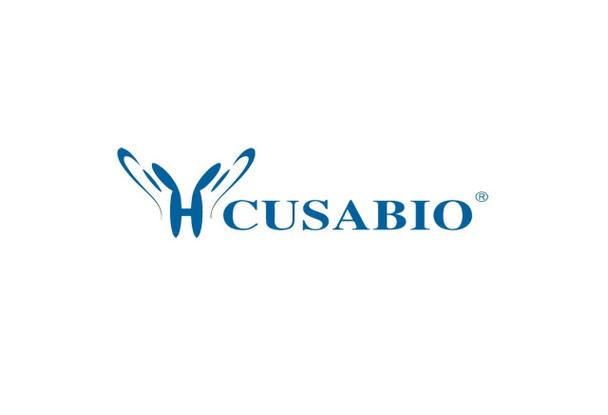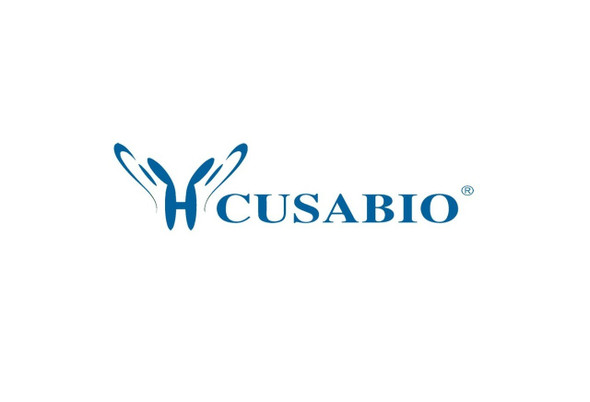Cusabio Escherichia coli Recombinants
Recombinant Escherichia coli DNA-binding protein H-NS (hns) | CSB-EP359764ENV
- SKU:
- CSB-EP359764ENV
- Availability:
- 3 - 7 Working Days
Description
Recombinant Escherichia coli DNA-binding protein H-NS (hns) | CSB-EP359764ENV | Cusabio
Alternative Name(s): Heat-stable nucleoid-structuring protein (Histone-like protein HLP-II) (Protein B1) (Protein H1) (bglY) (cur) (drdX) (hnsA) (msyA) (osmZ) (pilG) (topS)
Gene Names: hns
Research Areas: Others
Organism: Escherichia coli (strain K12)
AA Sequence: SEALKILNNIRTLRAQARECTLETLEEMLEKLEVVVNERREEESAAAAEVEERTRKLQQYREMLIADGIDPNELLNSLAAVKSGTKAKRAQRPAKYSYVDENGETKTWTGQGRTPAVIKKAMDEQGKSLDDFLIKQ
Source: E.coli
Tag Info: N-terminal 6xHis-tagged
Expression Region: 2-137aa
Sequence Info: Full Length of Mature Protein
MW: 19.5 kDa
Purity: Greater than 85% as determined by SDS-PAGE.
Relevance: A DNA-binding protein implicated in transcriptional repression. Also involved in bacterial chromosome organization and compaction. H-NS binds tightly to AT-rich dsDNA and inhibits transcription . Binds upstream and downstream of initiating RNA polymerase, trapping it in a loop and preventing transcription. Binds to hundreds of sites, approximately half its binding sites are in non-coding DNA, which only accounts for about 10% of the genome. Many of these loci were horizontally transferred; this offers the selective advantage of silencing foreign DNA while keeping it in the genome in case of need. Suppresses transcription at many intragenic sites as well as transcription of spurious, non-coding RNAs genome-wide. Repression of HTG by H-NS is thought to allow their DNA to evolve faster than non-H-NS-bound regions, and facilitates integration of HTG into transcriptional regulatory networks. A subset of H-NS/StpA-regulated genes also require Hha for repression; Hha and Cnu increase the number of genes DNA bound by H-NS/StpA and may also modulate the oligomerization of the H-NS/StpA-complex. The protein forms 2 clusters in the nucleoid which gather hns-bound loci together, bridging non-contiguous DNA, and causes DNA substantial condensation. Binds DNA better at low temperatures than at 37 degrees Celsius; AT-rich sites nucleate H-NS binding, further DNA-binding is cooperative and this cooperativity decreases with rising temperature. Transcriptional repression can be inhibited by dominant-negative mutants of StpA or itself. May effect transcriptional elongation. Can increase translational efficiency of mRNA with suboptimal Shine-Dalgarno sequences. Plays a role in the thermal control of pili and adhesive curli fimbriae production, by inducing transcription of csgD. Plays a role in flagellar function. Represses the CRISPR-cas promoters, permits only weak transcription of the crRNA precursor; its repression is antagonized by LeuO. Binds preferentially to the upstream region of its own gene recognizing two segments of DNA on both sides of a bend centered around -150. Overexpression suppresses secY24, a temperature-sensitive mutation. Has also been reported to activate transcription of some genes.
Reference: "Filling the gap between hns and adhE in Escherichia coli K12." Danchin A., Krin E. Microbiology 141:959-960(1995)
Storage: The shelf life is related to many factors, storage state, buffer ingredients, storage temperature and the stability of the protein itself. Generally, the shelf life of liquid form is 6 months at -20?/-80?. The shelf life of lyophilized form is 12 months at -20?/-80?.
Notes: Repeated freezing and thawing is not recommended. Store working aliquots at 4? for up to one week.
Function:
Involvement in disease:
Subcellular Location:
Protein Families:
Tissue Specificity:
Paythway:
Form: Liquid or Lyophilized powder
Buffer: If the delivery form is liquid, the default storage buffer is Tris/PBS-based buffer, 5%-50% glycerol. If the delivery form is lyophilized powder, the buffer before lyophilization is Tris/PBS-based buffer, 6% Trehalose, pH 8.0.
Reconstitution: We recommend that this vial be briefly centrifuged prior to opening to bring the contents to the bottom. Please reconstitute protein in deionized sterile water to a concentration of 0.1-1.0 mg/mL.We recommend to add 5-50% of glycerol (final concentration) and aliquot for long-term storage at -20?/-80?. Our default final concentration of glycerol is 50%. Customers could use it as reference.
Uniprot ID: P0ACF8
HGNC Database Link: N/A
UniGene Database Link: N/A
KEGG Database Link: N/A
STRING Database Link: N/A
OMIM Database Link: N/A







